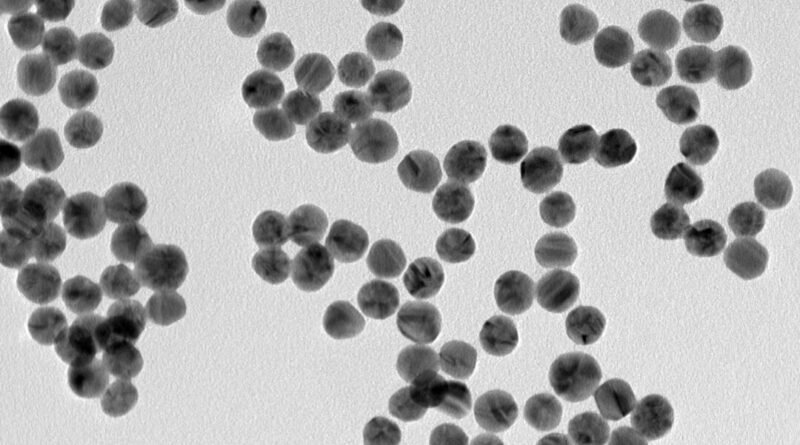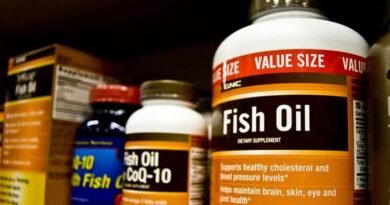Researchers Utilize Gold Nanoparticles to Combat Infections Without the Use of Antibiotics
A new animal study utilizes gold nanoparticles to both visualize and eliminate biofilms on teeth and skin wounds.
Imagine having the power to combat microscopic invaders within your own body using a laser sword, not in a distant galaxy but right here.
Researchers have devised a method using laser-heated gold nanoparticles to detect and eradicate bacterial biofilms. This technique, tested on rodent teeth and skin wounds, holds the potential to replace antibiotics in the future and address drug-resistant superbugs.
New Therapy Fights Bacteria Without Antibiotics
Scientists from the University of Pennsylvania and Stanford University have developed a unique approach employing sugar-coated gold nanoparticles. When exposed to near-infrared lasers, these nanoparticles can both visualize and eradicate biofilms in infected teeth and skin wounds in rats and mice.
Lead author of the study, Maryam Hajfathalian, a mechanical engineering Ph.D., described the treatment as an innovative and potentially practical method for imaging and managing wounds and skin infections without the need for drugs.
This represents a novel approach to cleansing teeth and wounds using minuscule gold particles and light beams. “This is the first instance where we have utilized engineered gold nanoparticles for eradicating oral biofilms through photothermal therapy,” she stated.
These particles have demonstrated rapid action, eradicating harmful bacteria in less than a minute without the need for broad-spectrum antibiotics. Due to their efficiency, potential new products such as specialized mouthwash, adhesive strips, or bandages utilizing light for wound cleansing could be developed.
The study was supported by various branches of the National Institutes of Health (NIH), including the National Institute of Biomedical Imaging and Bioengineering (NIBIB).
“With this platform, we can eliminate biofilms without the need for surgical debridement of infections, which is often necessary with antibiotic use,” commented Luisa Russell, a materials science and engineering Ph.D. who serves as the program director in the Division of Discovery Science & Technology at NIBIB.
This method could prove beneficial for individuals unable to tolerate conventional medications, including those allergic to antibiotics or with infections unresponsive to standard treatments. “The antibiotic-free nature of this approach is a significant advantage,” Ms. Russell emphasized.
Photothermal therapy displayed nearly 100 percent efficacy in biofilm eradication. “The treatment method is particularly swift for oral infections,” Ms. Hajfathalian remarked. “We applied the laser for one minute, but in reality, within about 30 seconds, we can eliminate almost all of the bacteria.”
The researchers aspire to further investigate if this technique can prevent cavities and expedite the healing process.
What’s in Light-Based Treatment?
To grasp the mechanics of this light-based treatment, one must first comprehend biofilms.
Biofilms
Biofilms are clusters of microorganisms that stick to surfaces in moist conditions and reproduce. They develop when bacteria secrete a slimy, adhesive substance, forming structures like dental plaque, shower residue, or coatings on surfaces such as rocks and human bodies.
Biofilm-related infections contribute to up to 80 percent of all infections in humans and animals, often impeding wound healing. They can lead to various complications, ranging from periodontal disease to urinary tract infections, and may even attach to medical devices like pacemakers and contact lenses.
According to the Microbiology Society, bacteria within biofilms can be up to 1,000 times more resistant to antibiotics than free-floating bacteria, making them a significant obstacle in treatment.
The dense network of proteins and carbohydrates within biofilms obstructs antibiotics from reaching the microbes, Ms. Hajfathalian explained. “Biofilms are challenging to address with existing clinical interventions due to antimicrobial resistance,” she noted. “Studies indicate that once biofilm infections establish, antibiotics alone are generally ineffective. Thus, there is a critical need to accurately diagnose and manage biofilm infections.”
Noble Metal Nanoparticles
Invisible to the naked eye, nanoparticles measure between 1 and 100 nanometers in size. Gold nanoparticles absorb light in visible and near-infrared spectrums. Near-infrared lasers emit radiation that does not harm tissues and can facilitate cell regeneration, improve blood circulation, and accelerate healing.
Noble metal nanoparticles are minuscule particles composed of noble metals—metals resistant to corrosion and oxidation in damp environments. Gold, silver, and platinum are the most prevalent noble metals. Possible applications include drug delivery and thermal ablation, a method that employs heat to eliminate unwanted tissue.
Gold nanoparticles, being non-toxic, exhibit promise for photothermal therapy by converting light energy into heat to eliminate pathogens. Additionally, they emit ultrasound waves when exposed to light, facilitating photoacoustic imaging—a non-invasive method of obtaining detailed internal body images using light.
A New Frontier in Medicine?
Scientists may be on the brink of a new era in infection treatment that could potentially rival the discovery of antibiotics.
“As scientists, our objective is to explore innovative strategies to combat infectious diseases,” Ms. Hajfathalian remarked. “We are enthusiastic about the possibilities and eager to advance our research through animal trials and clinical studies.”
Alongside her research on nanoparticles for photothermal therapy, she and her team are exploring alternative treatments to reduce reliance on antibiotics, such as phage therapy. This approach involves using bacteriophages, viruses that selectively target and eliminate specific bacteria.
Subsequent studies will examine the effectiveness of nanoparticles against biofilm infections in catheters, heart valves, lungs, and prosthetic joints.
All That Glitters Is Not Necessarily Gold
Mansoor Amiji, a pharmaceutical sciences Ph.D. and distinguished professor at Northeastern University in Boston, cautions against potential issues related to the internal use of metal nanoparticles.
While effective against surface infections, concerns linger around the safety of gold particles entering the body. “What occurs when those gold particles get inside? Are there any potential risks associated with their accumulation within the body?” he asked.
Mr. Amiji highlighted that photothermal therapy is not a new concept and has been utilized on accessible tumors, underscoring the importance of further research on the safety and broad-spectrum efficacy of metal nanoparticles against diverse organisms.
“There is an urgent need for improved antibiotics as well as non-antibiotic agents that can potentially be used to combat infections,” Mr. Amiji emphasized, suggesting that while nanoparticles may not entirely replace antibiotics, they could broaden the search for non-antibiotic agents to combat diseases.





